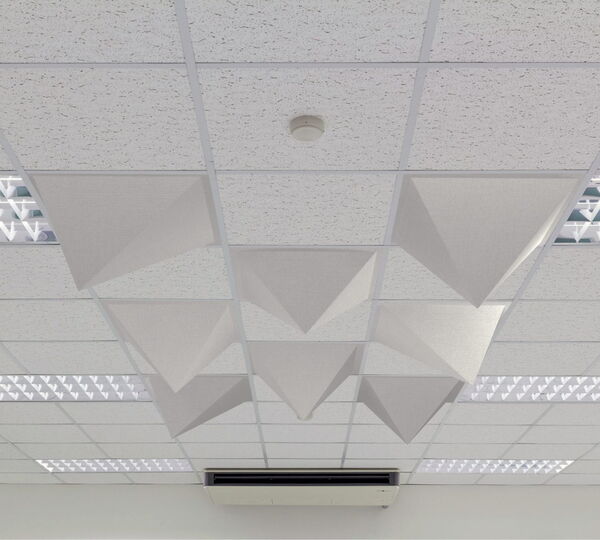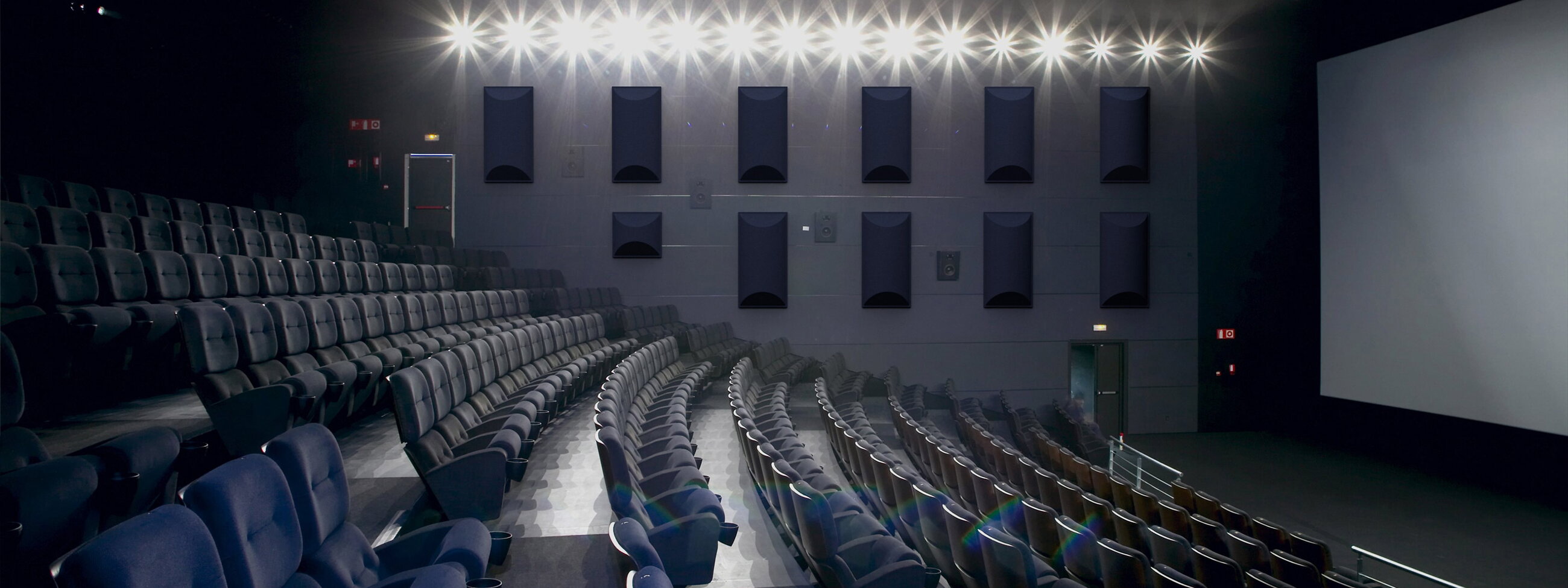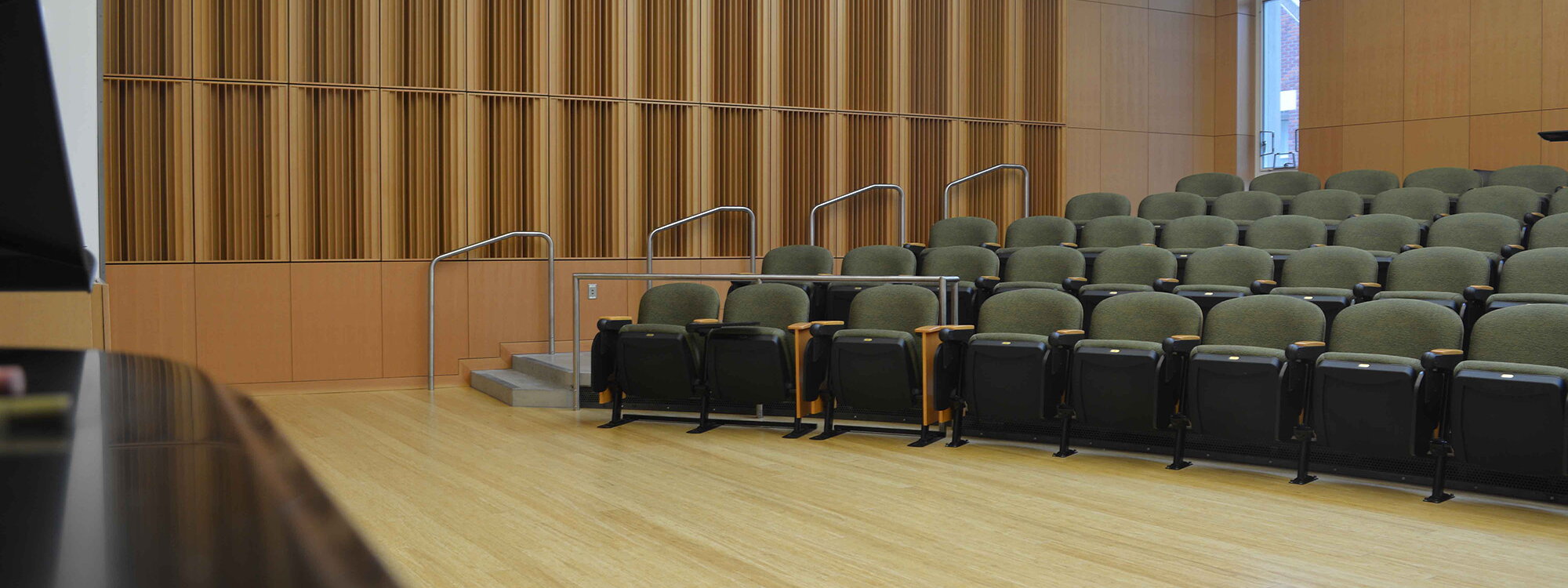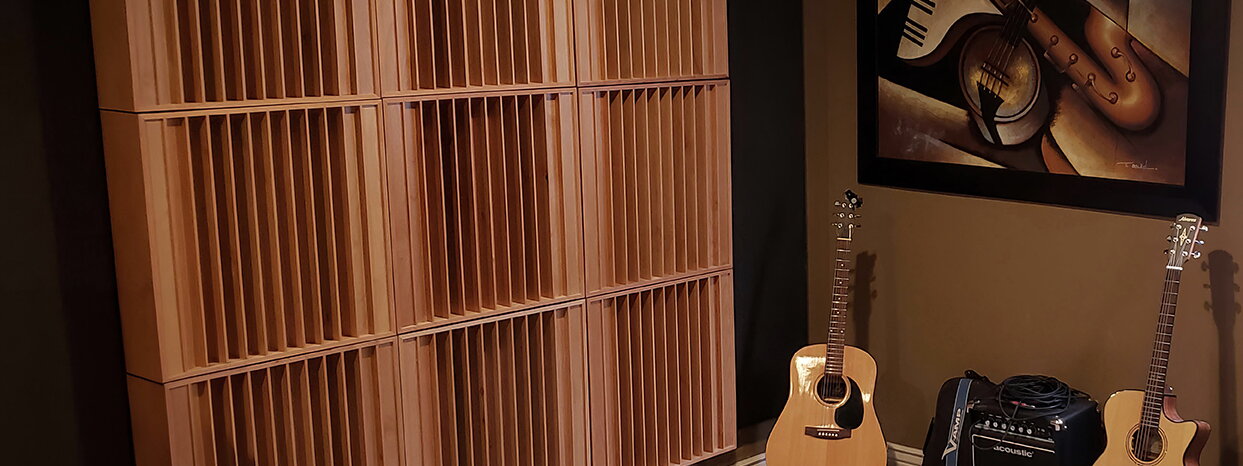Sound Diffusers for Critical Listening Environments
What Is Sound Diffusion?
Sound diffusion is the process of scattering sound energy evenly throughout a space to prevent the buildup of reflections or echoes in specific areas. Rather than allowing sound waves to bounce back in a concentrated manner—which can lead to issues such as phase cancellation, comb filtering, and general distortion—diffusers disrupt these waves and reflect them in multiple directions. This multidirectional scattering results in a more even, smooth sound field that preserves the original characteristics of the audio while enhancing spatial perception and clarity.
Unlike absorptive treatments, which reduce overall sound energy by converting it into heat, diffusers maintain the room's acoustic vitality. They prevent the formation of acoustic “hot spots” and “dead zones” by distributing sound more uniformly, creating a balanced auditory experience. This makes diffusers especially valuable in critical listening environments where both tonal accuracy and immersive sound fields are desired.
Diffusers are particularly effective in medium to large rooms where untreated reflective surfaces—such as drywall, windows, or hard ceilings—can distort sound. In such spaces, early and late reflections can cause muddiness and reduce speech intelligibility or musical detail. Diffusion mitigates these issues without removing the liveliness of the room, which is why it’s favored in spaces like concert halls, control rooms, lecture theaters, classrooms, houses of worship, and multi-use community venues. By using diffusion strategically, designers can retain the brightness and natural ambiance of a room while eliminating acoustic defects that compromise performance and communication.
Diffuser Types and Their Differences
Quadratic Residue Diffusers (QRDs) These are the most widely recognized diffusers, featuring a sequence of wells of varying depths based on prime number mathematics. QRDs are extremely effective at scattering sound across a wide range of mid- to high-frequencies and are typically mounted on rear or side walls.
Skyline Diffusers Skyline diffusers use a three-dimensional grid of varying-height blocks that scatter sound both vertically and horizontally. They are ideal for ceiling or wall placement in environments requiring omnidirectional diffusion, such as performance spaces, music studios, and high-end home theaters.
Hybrid Diffuser Panels Hybrid panels combine elements of absorption and diffusion in one unit. This allows for both control of problematic frequencies (absorption) and preservation of room energy and spatial feel (diffusion). Hybrids are often used in multi-purpose spaces or where low-frequency control is also a concern.
Diffusion vs. Absorption
While absorption reduces the amount of sound energy in a space—often making rooms quieter—diffusion keeps the energy but spreads it out more evenly. Overusing absorption can lead to a dull or overly “dead” environment, especially in performance or collaboration spaces. Diffusion offers an alternative that maintains clarity, intelligibility, and ambiance without flattening the acoustic texture.
For best results, diffusion and absorption are often used together. Absorbers might be placed at early reflection points, while diffusers enhance spatial imaging at rear or overhead positions.

Frequently Asked Questions
A: Use diffusers in any space where sound reflections are causing issues like echo, muddiness, or poor intelligibility—but where you still want to maintain a sense of liveliness and room energy. They are ideal for studios, sanctuaries, theaters, and multi-purpose halls. Diffusers are especially beneficial in music performance and mixing environments where clarity and spatial detail are critical. They're also useful in classrooms, conference rooms, and open-plan offices where speech intelligibility is important and you want to avoid excessive acoustic absorption.
A: Diffusers are typically placed on the rear wall, ceiling, or upper side walls. In studios, rear wall placement enhances imaging and depth by scattering sound that would otherwise reflect directly back to the listening position. In larger halls or open rooms, ceiling and high wall diffusion can break up vertical flutter and standing waves that degrade clarity. Ceiling-mounted diffusers can also improve listener experience in venues with high ceilings by reducing echo and enhancing sound coverage across the room.
A: No. Diffusers do not significantly reduce sound pressure levels (SPL) like absorbers or barriers do. Their role is to improve the quality and spatial character of sound in a room rather than to lower the volume. That said, the subjective experience of sound can feel more balanced and less harsh because diffusers reduce intensity spikes and hot spots caused by reflective build-up. If your goal is to reduce noise or sound transmission between rooms, other acoustical treatments are more appropriate.
A: Yes. In fact, combining diffusion with absorption is considered best practice for achieving a balanced acoustic environment. Diffusion provides spaciousness and clarity, while absorption handles reverberation and low-frequency buildup. Many high-performance rooms use a mix of treatments tailored to the acoustics of the space. Hybrid panels that incorporate both diffusive and absorptive properties are also available for applications where wall space is limited or where acoustic goals must be met with fewer materials.
A: They can be, especially when used strategically to open up the perceived space or improve imaging. In small rooms, placing a diffuser on the rear wall or ceiling can help counteract strong early reflections and prevent sound from feeling overly confined. However, care must be taken to balance diffusion with absorption, as too much reflection in a compact space can lead to cluttered or chaotic acoustics. Using computer modeling or acoustical consultation can help determine ideal placement.
A: Yes. Many of our diffuser panels are available in wood veneers, custom colors, or geometric shapes that double as architectural features. We offer decorative designs that enhance both form and function—ideal for modern offices, concert spaces, or residential interiors. Custom fabrication is also available, allowing diffusers to be integrated into furniture, wall art, or thematic architectural elements without compromising acoustic performance.
A: While not always required, an acoustical consultant or knowledgeable supplier like DDS Acoustical Specialties can make a huge difference in optimizing performance. We can assess your space, model its acoustic response, and recommend the best diffuser types and placements. This ensures your investment in acoustics delivers the desired results—whether that means a professional-grade studio or a better-sounding meeting room.



